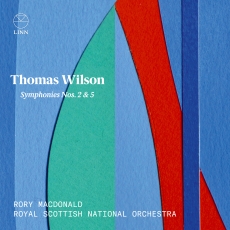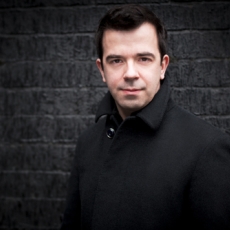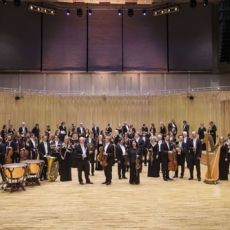Rory Macdonald & RSNO - Thomas Wilson: Symphonies Nos. 2 & 5 - The Art Music Lounge
Following on their issue last year of Thomas Wilson’s Symphonies Nos. 3 & 4, which I reviewed on this blog, Linn Records now gives us his Second and Fifth Symphonies. For those who missed it, Wilson (1927-2001) was considered Scotland’s greatest contemporary composer (though he was born in America), a man of unparalleled integrity and great originality. In my previous review, I said that “his music, to my ears, really didn’t sound like anyone else’s except in his adherence to a logical structure in development. He apparently liked very clear, transparent textures, considerably different from the usual symphonic composer, using a full orchestra almost like a chamber orchestra. There are absolutely no thick textures in his music; all was clarity and lucidity.”
The Second Symphony, which predates the Third by 14 years (1965), is in a slightly different style from the later ones. Although Wilson’s musical explorations are surprising and ingenious, there is much more lyricism in the first movement than I expected: more legato phrasing and warm passages played by the basses and celli—at least to start with. By the 2:35 mark, he has launched some edgy, bitonal passages that bite and drive, and we are back in more familiar territory for this composer. As with the later symphonies, these are not just random explosions without context; Wilson was a constructionist first and foremost, and knew full well what he was doing. Nothing is random. There are no superfluous passages or meaningless repeats in his symphonies. He means to get on with his business, and that is, in his own words, “to EXPLORE!”
Wilson built his scores to last, not just to be part of a passing fad in modern composing style, and it shows. This music is craggy but also monumental. It goes somewhere, it has a story to tell, but at the same time it is not going to follow any conventional norms. The second, slow movement has no time for soothing the listener; it, too, is somewhat edgy, with an undercurrent of unease. Millennials who like classical music will hate Wilson because he didn’t give them something comfortable to soothe their bruised egos. Needless to say, the third movement is all bustle and energy, with small motifs—sometimes, I would say, no more than gestures by the strings or brass—strung together to make up a theme. And there are more surprises, such as brief xylophone and piano solos, along with even briefer passages played by a solo cello.
The Fifth Symphony, which dates from 1998, opens with a soft but ominous tympani roll, following which a solo oboe plays forlornly for a while before the tempo changes and the strings take over, alternating lyrical and pizzicato phrases to make up a theme. Despite all of the bitonal and sometimes atonal gestures in his scores, Wilson’s music leaned towards tonality, though it only touched it here and there to “ground” itself before moving on. At the 6:24 mark, the music suddenly stops and the lower strings “laugh” softly in bitonal chords before the winds (oboe and clarinet) play lyrical passages that lead to a busy web of pizzicato and bowed string playing with muted trumpet interjections. But continued descriptions of this sort tend to sell the music short; verbal descriptions only convey so much. It is the listening experience that reveals the full scope of Wilson’s symphonies in all their glory. With their emphasis on soft, almost chamber-orchestra-type passages, they draw you in and then hold your attention as they continue moving and evolving in their own strange way.
This, too, is an invaluable CD for lovers of modern symphonic music. I couldn’t be happier that Thomas Wilson is finally getting his just due.


